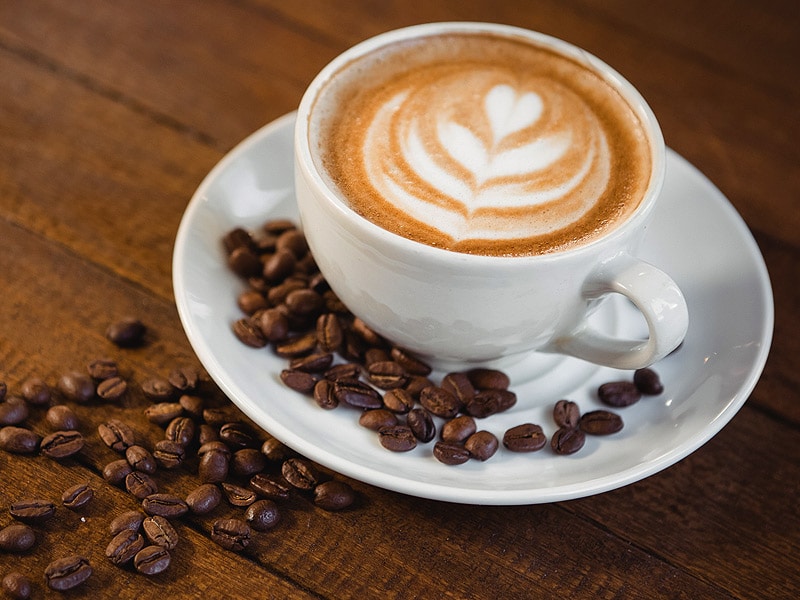
The espresso drink as we know it today, goes back to 1947, when Gaggia introduced the original equipment capable of producing constant high pressure during the shot pulling. The equipment was called Gaggia Crema Caffe and was meant for typical commercial usage. Before the Gaggia Crema Caffe practically every commercial and consumer espresso machine was vapor driven, comparable to the modern moka pot maker.
Full story here - What Is Espresso Roast
Espresso is a delicious, strong coffee drink. The typical offering, a shot, is made by pushing pressurized hot water through finely ground coffee beans.
Espresso has a thicker consistency than coffee prepared by various other brewing methods. It has a higher concentration of suspended and dissolved solids and crema.
Espresso has all of the same flavors of coffee but amplified-- bitter, mildly sweet, acidic, toasty. The specific aroma profile will certainly differ depending on the coffee roast. It has a thicker, creamier appearance than coffee.
Espresso isn't a different coffee bean, although roasters may have a special process for beans destined to become espresso. Actually, roasters may like to use high-grade robusta beans to incorporate an extra kick of caffeine.
Espresso or Expresso-- Utilize the Right Name
The spelling expresso is normally considered incorrect, though some sources call it a less common variation. Italy works with the term espresso, replacing s for most x letters in Latin-root words; x is not part of the standard Italian alphabet. Italian individuals frequently describe it simply as caffè (coffee), espresso being the regular coffee to buy; in Spain, while café expreso is seen as the more "official" denomination, coffee shop solo (alone, without milk) is the common method to ask for it when at an espresso bar.
Espresso Brewing
Espresso is prepared by pressing hot water through a layer of compacted ground coffee, contained in a port-filter. Pulling a shot of espresso calls for training and knowledge, take a look at our espresso brewing overview, for a detailed tutorial.
When it boils down to it, the preparation of espresso is what truly sets it apart. Because they rely on the slow filtering of hot water through your ground coffee, various other techniques of brewing take time. This implies several minutes between you and a fresh mug of coffee.
Espresso equipments pressurize and push near-boiling water through finely-ground coffee beans loaded into a compacted coffee bed. This technique offers you a complex, aromatic, and caffeine-packed shot of coffee in under thirty secs.
When brewed correctly, the actual espresso under the crema will have a distinct, rich preference, velvety mouthfeel, and aromatic fragrance. The much shorter duration of water exposure draws out less acid than various other brewing methods while still preserving 60% to 70% of the caffeine in the final mug.
Even though espresso takes only 30 secs to prepare, it still offers a substantial amount of caffeine. The procedure also preserves more aromatic and volatile coffee oils that you won't get in your normal mug of coffee.
Caffeine Content in an Espresso Shot
While espresso has the reputation of being high in caffeine, it all depends on just how much you consume. Given that the beverage tends to be offered in smaller sized portions than drip coffee, it can often end up having less caffeine than standard, brewed coffee. Double and triple shot beverages and mixed drinks like red-eyes can up the caffeine level substantially.
Espresso has 29 to 100 milligrams of caffeine in a single shot, frequently hovering around 75 milligrams. A double shot contains 58 to 185 mg. For contrast, a cup of drip coffee can have 80 to 200 mg of caffeine depending on the origin of the beans and preparation technique.
Espresso has all of the same flavors of coffee but enhanced-- bitter, lightly sweet, acidic, toasty. Italian individuals typically refer to it simply as caffè (coffee), espresso being the normal coffee to order; in Spain, while café expreso is seen as the more "formal" term, café solo (alone, without milk ) is the typical way to ask for it when at an espresso bar.
Espresso is prepared by pushing hot water through a layer of compressed ground coffee, had in a port-filter. Espresso is a really strong coffee, with a lot of aroma, flavor, and body. Preparing a shot of espresso requires training and understanding, take a look at our espresso brewing guide, for a comprehensive tutorial.